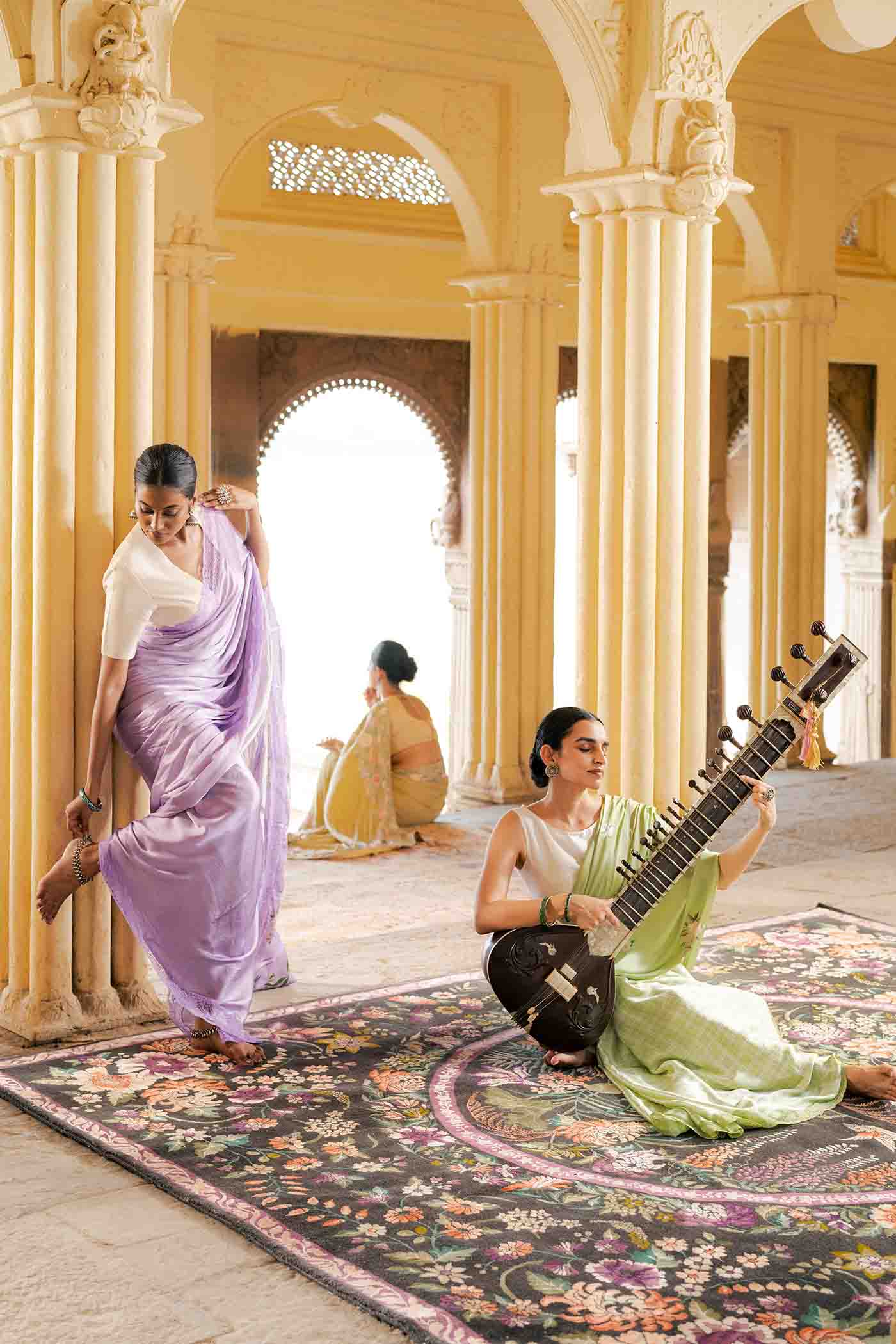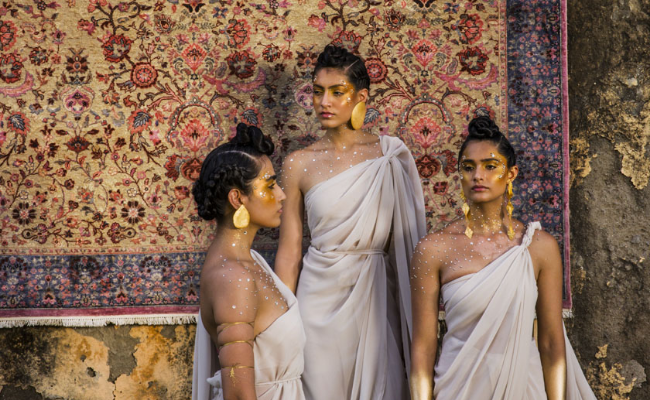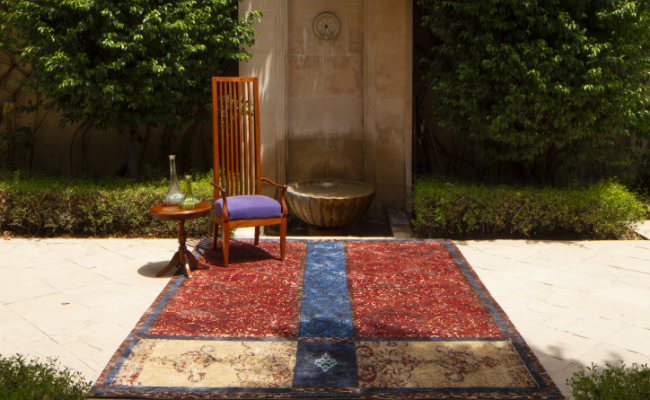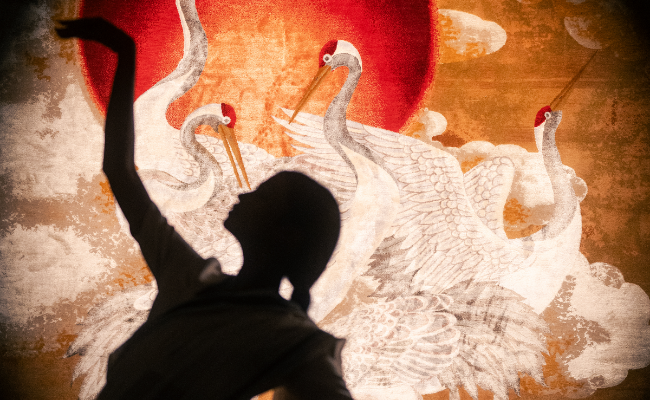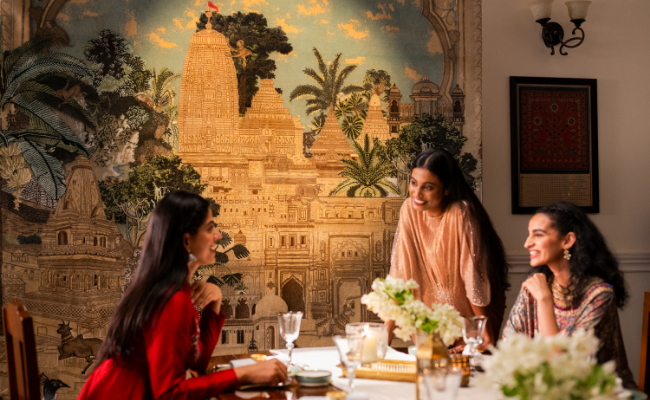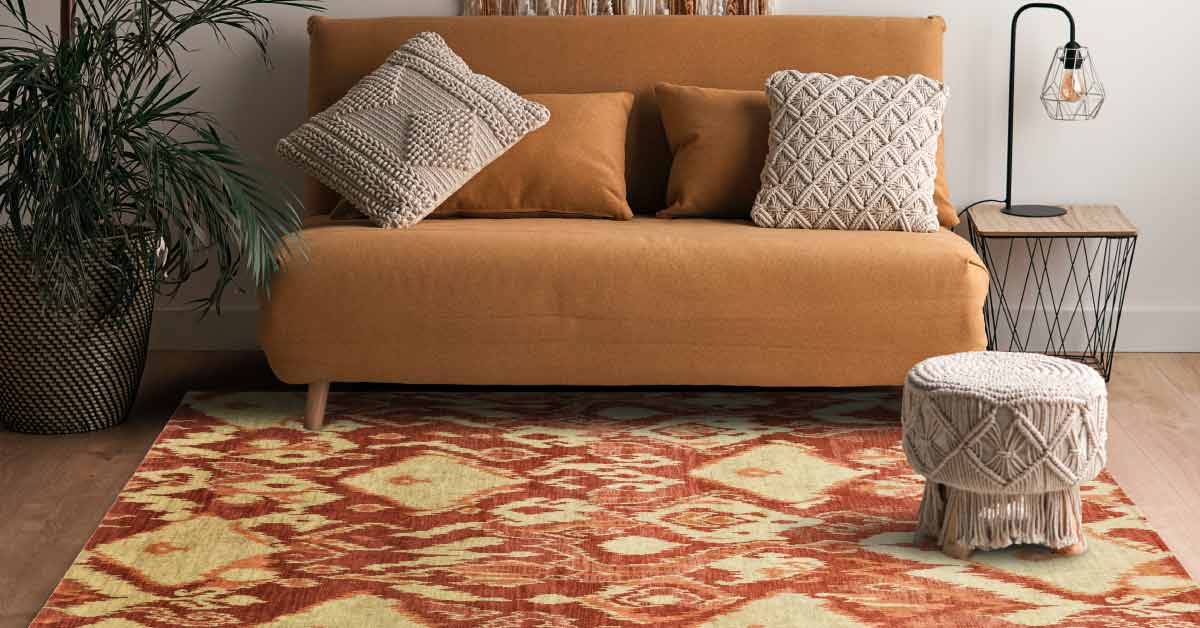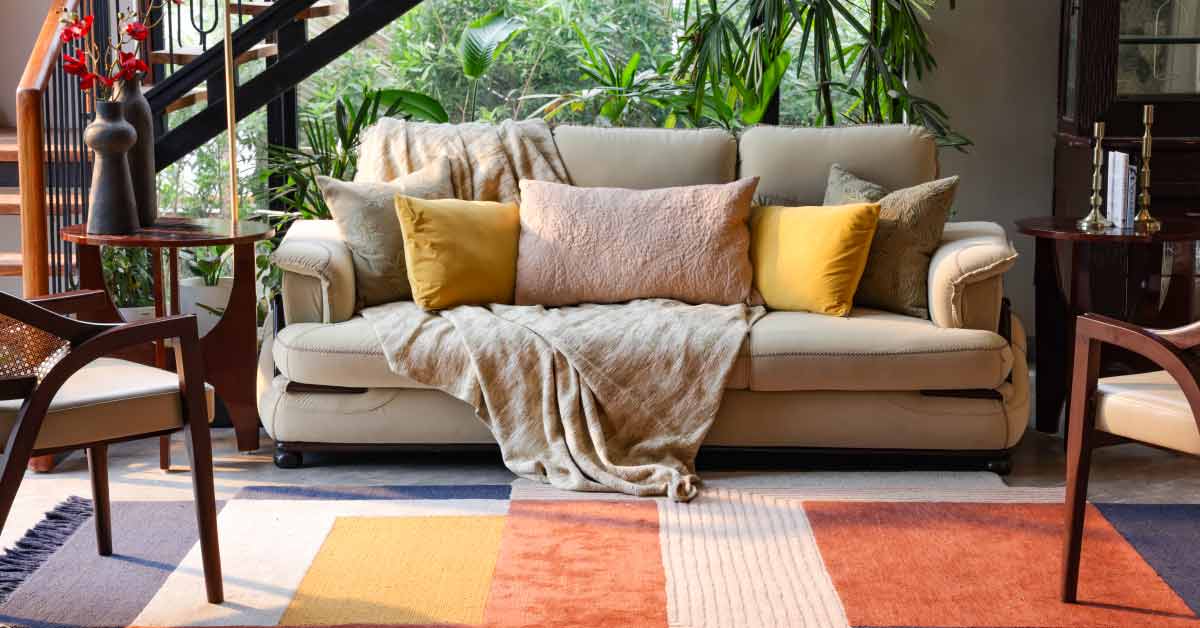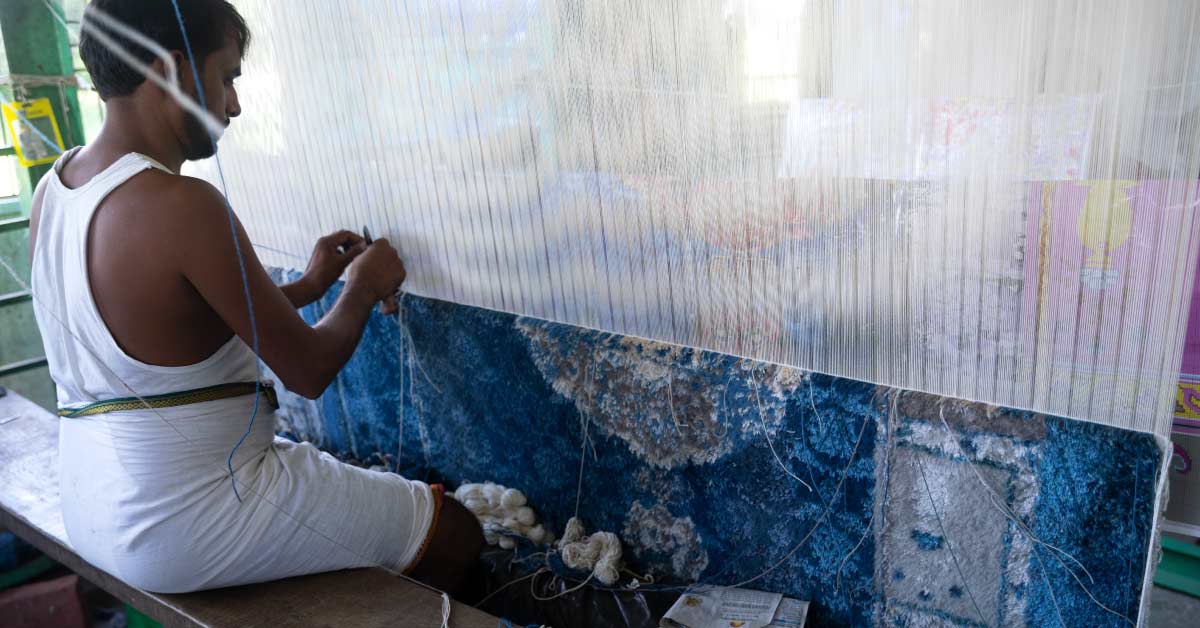
Inside the Making of Our ‘Proud to be Indian’ Collection
India has always been a place where art is not just practiced but lived. From the frescoes of Ajanta that still whisper stories from the 2nd century BCE to the delicate Mughal miniatures that blend Persian style with Indian imagination, every era has added to a rich tapestry of creativity. The country’s design heritage is as diverse as its people, from the royal weaves of Banaras to the intricate embroidery of Lucknow to the timeless block prints of Rajasthan. For centuries, artisans have preserved traditions that are not only decorative but also deeply symbolic, embodying values of community, spirituality, and identity.
What makes India special is not just the preservation of these crafts but their ongoing reinvention. Techniques that started in royal workshops now resonate in modern homes and global design discussions. According to UNESCO, India has more than 3,000 unique craft forms, many of which are unmatched in complexity and cultural importance. They serve as living proofs of Indian craftsmanship and its ability to evolve while maintaining its essence.
This living legacy also stands as a source of national pride. In a world often made uniform by machine production, India presents a different story where design is about beauty, continuity, community, and culture. Every motif, every knot, and every dye reflects labor and the spirit of heritage. Owning a piece of Indian art means holding a fragment of this legacy.
It is with this sentiment that Obeetee created its ‘Proud to be Indian’ Collection, a collaborative platform that unites some of India’s best designers. Each designer reinterprets the nation’s crafts through their unique creativity. The collection is more than just carpets; it is a journey through Indian history, fashion, and culture, reimagined for modern living.
Tarun Tahiliani: Understated Opulence
Known for his inspired reinvention, Tarun Tahiliani leads his series of the campaign with his signature style of understated opulence. His three collections tell visual stories that draw from Lucknavi Chikankari, Indian miniature paintings, and his own abstract artworks. Each handwoven piece is a tribute to traditional India-delicate, detailed, and dramatic. They capture the balance between simplicity and grandeur, inviting you to see rugs not just as décor but as narratives waiting to be explored.
Shantanu & Nikhil: Power, Progressiveness, Pride
The couture duo Shantanu & Nikhil bring their signature approach to power dressing into the world of carpets. Their collaboration with Obeetee revisits iconic collections, weaving symbols of strength and progress into designs. At the heart of their work is a strong sense of nationalism that celebrates India as a land of resilience and forward motion. Their PTBI carpets remind us that pride can be bold, modern, and unapologetically Indian.
Raghavendra Rathore: The Royal Lineage
Raghavendra Rathore embodies the regal essence of Rajasthan, exploring motifs and colors that reflect his aristocratic heritage. His collection draws inspiration from the Jodhpur Gaadi Masand, the city’s unique architectural style, and the royal coat of arms. These handwoven pieces echo imperial grandeur and the rich textile knowledge of India, creating carpets that are as much heirlooms as they are designs. Rathore’s rugs celebrate legacy while translating heritage into modern elegance.
Abraham & Thakore: Textile as Memory
Renowned for their textile mastery, Abraham & Thakore start their PTBI process by searching for personal stories. Their designs play with bandhani, ikat, block print, and calligraphy-crafts that have defined Indian handmade traditions for centuries. The result is a collection that feels intimate and familiar, like fabric woven with memory. In their hands, carpets become more than just floor coverings; they transform into textile stories stitched together from India’s cultural memory.
JJ Valaya: From Kashmir to Marseille
Obeetee’s long-standing partnership with JJ Valaya continues with his Kapurthala series-rugs that blend Jamawar paisleys with floral edges inspired by royal tastes. Valaya reimagines historical motifs with modern graphic elements, creating rugs that reflect the movement of heritage across different places, from Kashmir to Marseille. His carpets are rich, layered, and showcase India’s timeless love for textiles.
Anita Dalmia: Elysian Nature
Designer Anita Dalmia finds inspiration in the delicate balance of nature. Her Elysian collection reflects the harmony between people and the environment through hand-knotted and hand-tufted rugs. Each motif and color palette celebrates the timeless beauty of nature, designed to endure not just in material value but in memory, as pieces that accompany you for a lifetime.
Ashdeen: The Parsi Gara Legacy
Ashdeen is known for reviving the Parsi Gara embroidery. He combines oriental chinoiserie designs with Persian motifs in his PTBI series. His rugs are exotic, delicate, and full of history, bringing embroidery techniques usually reserved for textiles into the realm of carpets. They honor precision and beauty while showcasing cross-cultural influences in a modern context.
Anju Modi: Virasaat of Storytelling
For Anju Modi, design embodies a guiding principle. Her Viraasat collection, created for Obeetee, draws inspiration from the Panchavati of the Ramayana, reflecting themes of good triumphing over evil. Jewel-toned colors, motifs of plants and animals, and her connection to tradition come together in rugs that embody storytelling. Modi’s designs offer more than just visual appeal; they provide deep, philosophical reflections woven into each piece.
A Celebration of India
Together, these collections form a tapestry of India’s design excellence. They highlight not only the beauty of Indian crafts but also the values they represent-continuity, resilience, and pride. The Proud to be Indian Collection by Obeetee pays tribute to India’s artisans, designers, and heritage. It aims to carry the stories of the past into the homes of today, ensuring that India’s legacy continues to live, breathe, and inspire.
Stepping onto one of these rugs is like stepping onto history, memory, and identity-woven into every knot with pride.


